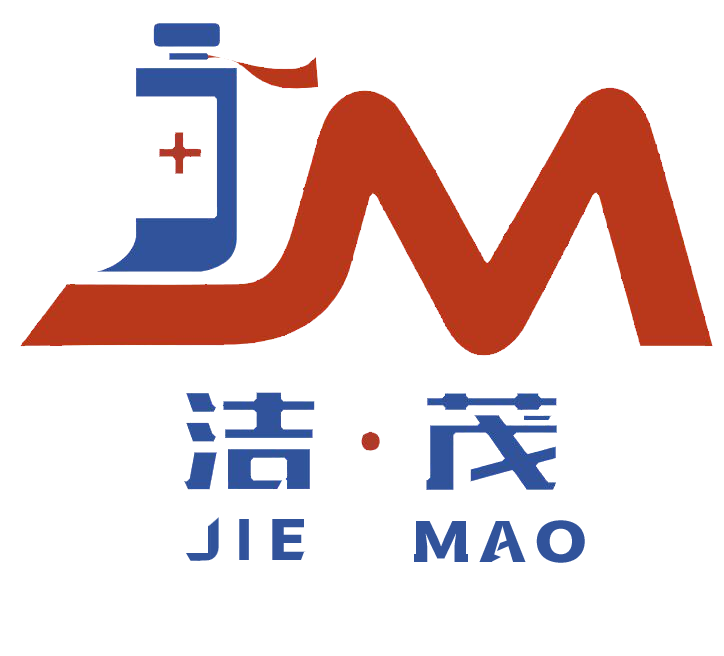- Home
- >
- News
- >
- Public Information
- >
- Recycled plastics: current situation, challenges, and future opportunities
Recycled plastics: current situation, challenges, and future opportunities
In the context of global sustainable development, recycled plastics, as a highly potential resource, are gradually becoming the key to solving plastic pollution problems and alleviating resource shortages. The development of the recycled plastic industry is not only related to environmental protection, but also closely related to the green transformation of the economy.
1、 Current Development Status of Recycled Plastic Industry
(1) Market size and growth trend
In recent years, the recycled plastic market has shown a strong growth trend. According to relevant data, China's plastic production reached over 100 million tons in 2020. However, at that time, the amount of recycled plastic waste was only about 16 million tons, accounting for only one-fifth of the total. But with the increasingly strict environmental policies and the continuous improvement of social environmental awareness, this situation is rapidly changing. The industry expects that by 2025, the domestic waste plastic recycling and regeneration volume will be around 25 million tons. The FIORMARKETS report predicts that by 2026, the global market value of recycled thermoplastic plastics will reach 104.76 billion US dollars, with a compound annual growth rate of 9.98%. In China, the increasing proportion of recycled plastics used by various plastic product enterprises and the increasingly active trading platforms for recycled plastics all demonstrate the vigorous development of this market. For example, Liaoning Sulai New Materials Co., Ltd., a trading service platform for recycled plastics under Zhuoer Zhilian, has obtained Global Recycle Standard (GRS) certification. Its park produces an average of 2500 tons of recycled plastic pellets and 3000 tons of sheets per month, covering multiple fields such as wood plastic, flower pots, and pipelines.
(2) Main application areas
Packaging industry: As an important battlefield for the application of recycled plastics, the use of recycled plastics in the packaging industry has been increasing year by year. Recycled plastic bags, containers, turnover boxes and other products can be seen everywhere. With the increasing recognition of environmentally friendly packaging by consumers, it is expected that by 2030, the global packaging industry's use of recycled plastics will increase by 50%. Many well-known brands have started using recycled plastic packaging, such as some beverage companies using recycled PET to make beverage bottles, which not only reduces costs but also enhances the brand's environmental image.
Construction industry: Recycled plastics are also widely used in the construction industry. From building templates, insulation materials to decorative materials, the presence of recycled plastics can be seen. Recycled plastic templates are lightweight, easy to disassemble, and reusable. Compared with traditional wooden templates, they not only reduce wood consumption, but also perform well in terms of weather resistance, waterproofing, and fire resistance; Recycled plastic insulation materials have good thermal insulation performance, low energy consumption in the production process, and are in line with the concepts of green building and sustainable development. With the deepening implementation of the sustainable development strategy in the construction industry, it is expected that by 2025, the global demand for recycled plastics in the construction industry will increase by more than 30%.
The automotive industry: The demand for recycled plastics in the automotive industry is increasing day by day. The application of recycled plastics in automotive interior, exterior, chassis components and other fields is gradually becoming popular. For example, some car seats, instrument panels, bumpers and other components have begun to be made of recycled plastic. It is expected that by 2027, the annual demand for recycled plastics in the automotive industry will reach 2 million tons, and recycled plastics will play a significant role in automotive lightweighting.
Electronics industry: With the acceleration of electronic product updates, plastic components in waste electronic products have become an important source of recycled plastics. It is expected that by 2025, the demand for recycled plastics in the global electronics industry will increase by 40%, and the application areas will further expand. Some electronic products have started using recycled plastics for their casings and internal structural components, with a greater emphasis on environmental friendliness and functionality, such as using recycled plastics with electromagnetic shielding capabilities.
2、 Recycling and processing technology of recycled plastics
(1) Current situation of recycling system
At present, China has initially established a waste plastic recycling system, but there are still many problems. In terms of recycling channels, it mainly relies on individual recyclers, waste recycling stations, and some legitimate recycling enterprises. Individual recyclers and waste recycling stations are widely distributed, but the quality of recycled plastics varies greatly and there is a lack of effective classification and pre-treatment; Although legitimate recycling enterprises have a certain scale and technical strength, their quantity is relatively small and their coverage is limited. In addition, the development of recycling systems in different regions is uneven, with relatively complete recycling systems in urban areas and weaker recycling networks in rural and remote areas.
(2) Types and characteristics of processing technology
Physical recycling technology: This is currently the most widely used recycled plastic processing technology. The main process includes classification, cleaning, crushing, melting, and other steps. Firstly, the recycled waste plastics are classified manually or mechanically to separate different types of plastics and ensure the purity of the recycled materials; Continuing with cleaning to remove impurities and pollutants from the plastic surface is a key step in ensuring the quality of recycled materials; Then the cleaned plastic is broken into small pieces, melted by heating, and processed into recycled plastic particles through extrusion, granulation, and other processes. Recycled materials from physical recycling typically have good mechanical properties, but due to the damage to plastic molecular chains during processing, their heat and chemical resistance are relatively poor.
Chemical recycling technology: Chemical recycling technology decomposes waste plastics into monomers or oligomers through chemical treatment methods, and then synthesizes new plastics. This technology can effectively improve the performance of recycled materials, making them approach or even reach the level of native plastics. For example, PET plastic can be decomposed into terephthalic acid and ethylene glycol through depolymerization reaction, and then re polymerized to obtain high-quality PET resin. However, chemical recycling technology has high costs and strict requirements for equipment and technology, and has not yet been widely adopted.
Other innovative technologies: In addition to physical and chemical recycling technologies, some innovative technologies are also constantly emerging. For example, biodegradable plastic recycling technology decomposes biodegradable plastics into small molecule substances through the action of microorganisms or enzymes, and then recycles them; There are also some new technologies dedicated to improving the separation efficiency of waste plastics, such as using near-infrared spectroscopy technology to accurately identify and separate different types of plastics, thereby improving the quality of recycled plastics.
3、 Challenges faced by recycled plastics
(1) Quality stability issues
The quality of recycled plastics is influenced by various factors, such as the complex sources of recycled plastics, which may be mixed with different types and qualities of plastics, and even contain impurities and pollutants, making it difficult to ensure stable quality of recycled plastics. During the processing, differences in equipment, technology, and other factors can also easily lead to fluctuations in the performance of recycled plastics. For example, in the process of physical recycling, multiple heating and melting of plastics can degrade their molecular chains, thereby reducing the strength and toughness of recycled materials. The instability of quality limits the application of recycled plastics in industries that require high material performance, such as healthcare and high-end electronics.
(2) Cost and Economic Benefit Issues
Although using recycled plastics can help reduce resource consumption and environmental costs in the long run, in the short term, the production cost of recycled plastics does not have an advantage. On the one hand, the collection, transportation, and classification costs of recycled plastics are relatively high, especially in the case of an imperfect recycling system, which further increases the cost; On the other hand, in order to improve the quality of recycled plastics, more advanced processing technologies and equipment are often required, which can also lead to increased costs. In contrast, the production process of native plastics is mature and the cost is relatively stable, which puts price pressure on recycled plastics in market competition. Many recycled plastic companies have meager profits and even face losses, which to some extent restricts the development of the recycled plastic industry.
(3) Policy and regulatory issues
Although the Chinese government has introduced a series of policies and regulations to encourage the recycling and utilization of recycled plastic materials, such as tax incentives, subsidies, and restrictions on the use of disposable plastic products, there are still some problems in the actual implementation process. The implementation details of some policies are not clear enough, which leads to difficulties for enterprises when applying for preferential policies; Some local governments do not attach enough importance to the recycled plastic industry and lack effective supervision and guidance, resulting in some small workshop style recycled plastic processing enterprises producing illegally. This not only fails to guarantee product quality, but also causes secondary pollution to the environment. In addition, there are differences in standards and regulations for recycled plastics among different countries and regions internationally, which also poses certain obstacles to the international trade of recycled plastics.
4、 Future Development Trends and Prospects
(1) Technological innovation drives industrial upgrading
With the continuous advancement of technology, the recycling and processing technology of recycled plastics will continue to innovate. In the future, chemical recycling technology is expected to make greater breakthroughs, reduce costs, improve efficiency, achieve large-scale industrial applications, and thus produce higher quality recycled plastics. At the same time, advanced detection technology and automation equipment will be widely used in the classification and quality control processes of recycling, improving the quality stability of recycled plastics. For example, artificial intelligence and machine learning technologies can be used to optimize recycling processes, accurately identify plastic types and impurities, and achieve more efficient separation and processing.
(2) Market demand continues to grow
With the increasing global attention to environmental protection and sustainable development, as well as the strengthening of consumer environmental awareness, the market demand for recycled plastics will continue to grow. More and more companies are increasing their use of recycled plastics in order to meet environmental standards and enhance their corporate image. In some emerging fields such as new energy vehicles and 3D printing, recycled plastics will also usher in new application opportunities. It is expected that in the coming years, the proportion of recycled plastics in industries such as electronics, automotive, and construction will further increase, and the market size will continue to expand.
(3) Industrial integration and standardized development
Faced with the many problems in the current recycled plastic industry, industry integration and standardized development will become an inevitable trend. On the one hand, large enterprises will integrate resources, expand their scale, and enhance their market competitiveness through mergers and acquisitions, cooperation, and other means; On the other hand, the government will strengthen the supervision of the recycled plastic industry, improve relevant standards and regulations, and promote the standardized development of the industry. For example, establishing a unified quality standard and certification system for recycled plastics, strengthening environmental supervision of recycled plastic production enterprises, phasing out outdated production capacity, and promoting the healthy and orderly development of the industry.
The recycled plastic industry, as an important way to achieve the recycling of plastic resources, has enormous development potential. Despite facing many challenges such as quality stability, cost, policies and regulations, with technological innovation, market demand growth, and industrial integration and standardization development, the recycled plastic industry will inevitably usher in broader development prospects and play an important role in the global sustainable development process.




